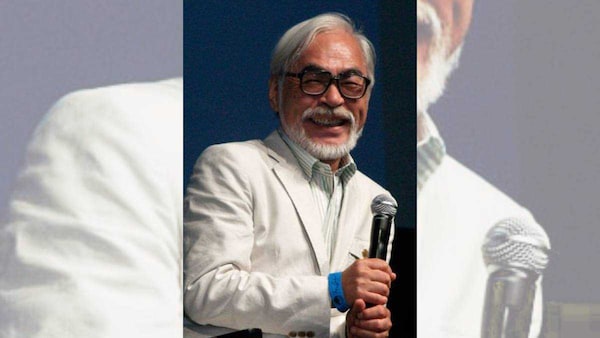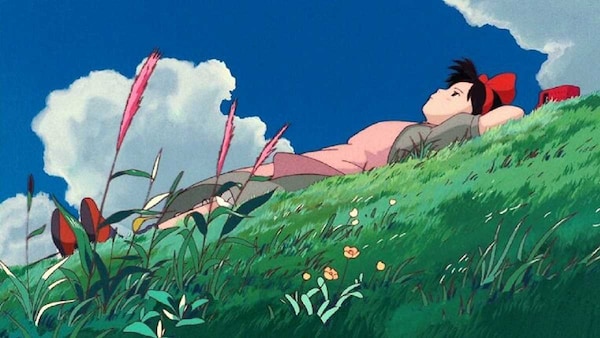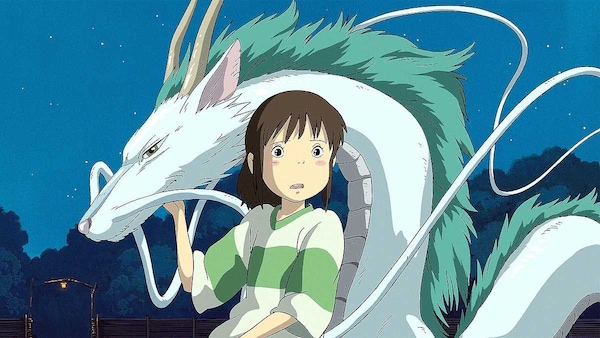Newsletter | The Wondrous Worlds Of Hayao Miyazaki
Taking in and luxuriating in every persuasive detail of Hayao Miyazaki's visions is like dreaming with our eyes wide open, writes Prahlad Srihari.

Last Updated: 08.08 PM, Jul 23, 2023
This column is published as part of our newsletter Stream Of Consciousness. Subscribe here. (We're awesome about not spamming your inbox!)
***
“IT’s called ma. Emptiness. It’s there intentionally. (Clapping his hands) The time in between my clapping is ma. If you just have non-stop action with no breathing space at all, it’s just busyness, but if you take a moment, then the tension building in the film can grow into a wider dimension.” — Hayao Miyazaki to Roger Ebert
Two sisters, Satsuki and Mei, wait in the rain for their father at a bus stop at the edge of a forest. While waiting, the younger Mei dozes off on the older Satsuki’s back and slips off her tired shoulders every now and again. The only sound is of rain falling — until we hear footsteps approaching. Satsuki peers under the umbrella and sees a pair of stubby paws. Standing beside her is the fluffy mythical creature Totoro. When Satsuki sees Totoro has nothing but a leaf to shelter him from the rain, she lends him her spare umbrella. Totoro accepts and revels in the sound of rain landing on the fabric. Soon afterwards, a bus shaped like a grinning cat arrives to whisk Totoro away.
This scene from My Neighbor Totoro (1988) unfurls without a word said. There is a stillness between the action, a pause for reflection, a breather amidst the whimsical frenzy, that is essential to the film’s enchanting rhythm. As Hayao Miyazaki calls it: “Ma”.

The Japanese idea of ma permeates just about every world imagined by Miyazaki, envelopes every memorable character and animates every magical moment. We sense it when the fantasy world comes alive so that Satsuki and Mei can overcome their fears and find peace as they adventure with the mythical creatures inhabiting the forest. We sense it in Spirited Away (2001) when 10-year-old Chihiro boards a train full of faceless commuter spirits, sits in silence and watches the world pass by across a wordless journey. Through the synthesis of movement and stasis, a strange quality emerges: the scene feels infinite in the moment but over before you know it. Ma is what gives every Miyazaki film their unparalleled power.
It’s why anticipation for the Japanese animator’s final film, The Boy and the Heron, is sky-high despite Studio Ghibli’s curious promotional strategy to not do any promotion. No trailer, no teaser, no still. Just a poster featuring a heron. If his past body of work offers any clue as to what to expect, it’s that his latest will be another pencil-drawn labour of love. Miyazaki remains animation’s preeminent auteur, having maintained a sophisticated grasp of the medium and a keenness to re-envision Japan’s epic folklore within the rich domain for decades.
Like any pioneer in any field, Miyazaki was quick to recognise the possibilities of animation and sought to tell stories that couldn’t be told via live-action. In the process, he pioneered a vocabulary that remains a formidable creative arsenal for modern animators. His work has influenced animators like John Lasseter, Pete Docter, Mamoru Hosoda, Nick Park, Henry Selick and Makoto Shinkai, as well as filmmakers like Wes Anderson, Guillermo del Toro, Bong Joon-Ho and James Cameron. Lasseter once said, “Whenever we get stuck at Pixar or Disney, I put on a Miyazaki film sequence or two, just to get us inspired again.” The words perhaps hold true in every animation studio.

Now, in an industry moving away from hand-crafted animation towards CG animation, how the master and his colleagues at Ghibli broaden the perimeters of their storytelling and experiment with style will shape the medium’s future. We get a sense of how the medium has evolved over the years by comparing Ghibli’s output to that of Pixar, Disney, Aardman, Laika and the like. What separates the Japanese studio from the rest comes down to how its films tap into that childlike capacity for wonder and keep their structure loose enough to allow characters (and viewers) room to breathe.
Watching Miyazaki’s films is like being granted a direct portal to his unfettered imagination, to the wonders and sorrows of being young, to worlds of lyrical beauty and bittersweet truth. We see mythical creatures and mankind battle side-by-side to protect nature and its resources under threat from wasteful consumption. We see bucolic landscapes ravaged by war and haunted by national traumas. We see industrial ambitions run amok and where the corrupting influence of our greed will inevitably lead us. Yet, we also see animation at its animistic and humanistic best: spirits and gods roam freely; waves shift back and forth in the form of water and fish; an anthropomorphic pig delights in the joyful escape of flying.
Miyazaki’s protagonists — more often than not girls negotiating the terrain between childhood and adulthood — tend to be pioneers themselves. They can be courageous, assertive, idealistic, lively and careless. They have complex inner lives. Kiki, for example, is a teenage witch-in-training looking for a sense of purpose and hoping to discover her full potential. Some are crusading heroines ready to fight for what they believe in. Nausicaä and San (from Princess Mononoke) are willing to risk their lives to repel unjustified aggression and preserve their natural communities.

From the post-apocalyptic enclave of Nausicaä of the Valley of the Wind (1984) to the flights of fantasy of Kiki’s Delivery Service (1989) to the freewheeling dream-logical world of Spirited Away (2001), Miyazaki’s visions have inspired the world-building and scale of animated series like Avatar: The Last Airbender, live-action blockbusters like Avatar and video games like The Legend of Zelda series. The look, feel and texture of Pixar movies like Up and Luca evoke the best of Ghibli. The red puberty panda in Turning Red is as huggable as Totoro.
Over the years, Miyazaki has given us so many films that have endured as touchstones of animation. Taking in and luxuriating in every persuasive detail of his visions is like dreaming with our eyes wide open. There is so much beauty and wonder to surrender to. But what makes him an undisputed titan of animation is his incredible talent for drawing out the essence of humanity and nature in the most spellbinding images by hand.

 Premium
Premium